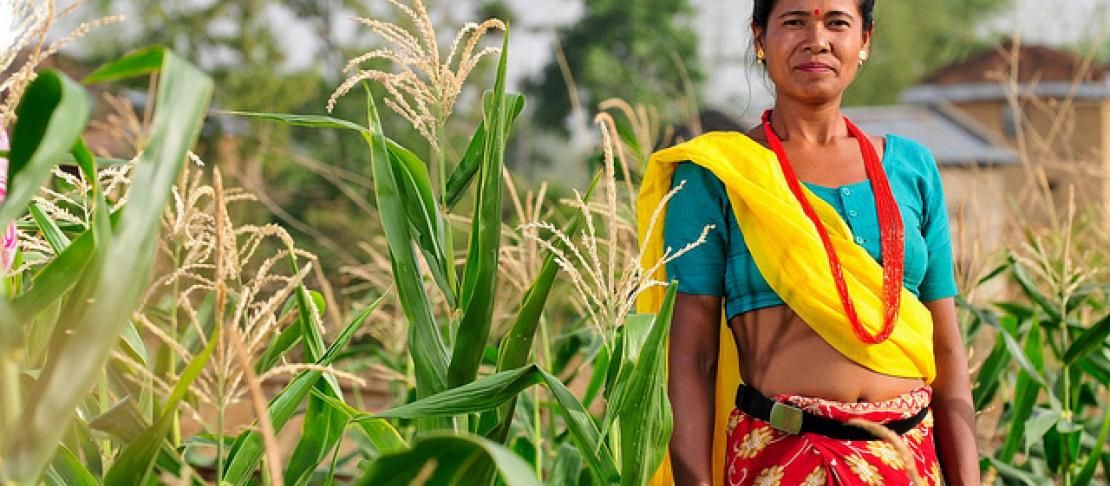A trailblazer in adopting climate smart practices: one cooperative’s success story

A member of the Annapurna Seed Producer Cooperative Organization Limited (ASPCOL) in the Manpakadi Village Development Committee in Rupandehi, Prem Nath Ghimire, has been thrilled by the overall production of rice last year after he tried the Direct Seeding of Rice (DSR) technique. He was able to produce roughly six tonnes of paddy per hectare and earn a total income of about 200,000 Nepalese Rupees (NRs) from a single season, almost double his usual farm income. The DSR technology involves the drilling of seeds in non-puddled soil conditions, thereby reducing costs and labour for puddling and transplanting, greatly saving on water usage. You see, most rice fields are first flooded with water before tillage. This tillage of flooded soil is known as puddling. Puddling has advantages in certain types of soil but always entails the trade-off of high water consumption. In DSR, after sowing, the field is watered in a normal manner.
Saving water and increasing yields at the same time
Last year, DSR was practiced on 30 hectares of land by farmers from the cooperative. Machinery required for this intervention was contributed by the Cereal System Initiative South Asia (CSISA) project, which was launched in the village.
Click here to find out more about the CCAFS research site in Rupandehi.
The Nepal Development Research Institute (NDRI) in partnership with CCAFS South Asia recently initiated research on prioritising climate change adaptation and mitigation interventions in agriculture in Nepal. From a preliminary survey of the intervention sites, it is evident that DSR is one of the more productive climate smart interventions, in terms of saving water and optimizing crop production.
Local cooperatives best placed to lead climate-smart interventions
During the first field visit to the Manpakadi Village Development Committee, our team met with the cooperative’s farmers who have been actively adopting various climate smart interventions through their own initiatives. The cooperative was established in 2007 primarily to produce and distribute better quality seeds to farmers but has since increased its range of services. Today, the cooperative is able to produce more than 100 metric tonnes of foundation seeds, different classes of certified seeds and improved seeds from around 100 hectares. It also now provides fertilizers and machinery such as tractors, power tillers, threshers, rotavator, seed-and-fertilizer driller and harvesters and rice mills to local farmers at discounted rates. Currently, the cooperative has 53 members and three farmers’ groups, with each member contributing a minimum of 10,000 NRs (around 110 USD) as a share amount.
Most of the farmers agree that rainfall patterns are varying in unpredictable and erratic ways which has led to a reduction in crop yields. Realising the futility of depending solely on traditional methods to cope with climate-related risks to agriculture, they understand the urgency to adopt various climate-smart interventions. The cooperative members have adopted the system of rice intensification (SRI), direct seeded rice (DSR), green manuring, and planting drought-tolerant varieties of rice and wheat. They have also proactively pursued training on technological interventions provided by different organisations such as the Nepal Agricultural Research Council and the District Agriculture Development Office, Rupandehi. This year, with the support from the International Wheat and Maize Improvement Center (CIMMYT) and CCAFS, a few farmers have adopted laser land leveling; the outcome of which is yet to be observed.
Introducing index insurance
The cooperative has also been a trailblazer it terms of offering a crop insurance scheme to its members. Crop insurance is relatively new in Nepal (introduced only in January 2013 by the National Insurance Board) but farmers of this cooperative were already benefiting from it for the past two years. For now, only two insurance products have been developed for paddy and wheat, and the scheme targets smallholder farmers having a land size in the range of 0.16 to 1.33 hectares.
Click here to find out more about Index Insurance
Through the scheme, farmers can insure their crops by paying 15 percent of their estimated production beforehand. That means that for one hectare of land, about 22,500 NRs has to be paid as a premium, assuming one hectare of land provides a total production worth 150,000 NRs. Farmers can then be compensated for up to 80 percent of their loss. The cooperative, till date, has collected nearly 1.1 million NRs as an insurance fund.
In just six years, the cooperative has accumulated a total capital of about 30 million NRs, excluding land, building and machinery costs, and a share capital worth 4.7 million NRs.
Given their ability to reach out to farmers, take into account members’ experiences and views, and apply strategic interventions; cooperatives like this are proving themselves to be one of the most effective means of promoting climate smart agriculture practices. Practices which are helping to ensure that farmers like Prem Nath Ghimire continue to benefit from increased yields during good seasons, but are also protected during the bad.
Find out what else CCAFS is doing in South Asia
View a video about our Climate Smart Village project
By Ms. Sona Shakya; Mr. Dhiraj R. Gyawali; Dr. Jaya K. Gurung; and Prof. Dr. Punya P. Regmi of the Nepal Development Research Institute.



